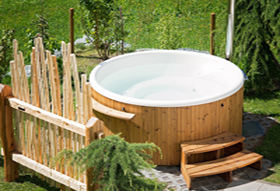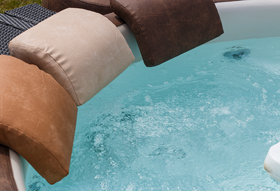
A Quick Guide to Hot Tub Foam

Despite there being many uses of foam inside the home, it is also incredibly popular for a range of outdoor applications. In more recent times, more people are purchasing hot tubs for their gardens, and in turn, sourcing different types of foam to refresh and maintain certain elements of it. Hot tubs are an expensive investment, so you want to ensure that they are kept in the best condition possible.
One of the most popular uses for foam is in the form of hot tub covers and lids. Hot tubs are fantastic in the summer, and during these warm months it is also far easier to regulate their warm temperature. However, during the colder spells such as those we see in the UK, it soon becomes far harder to keep your hot tub warm. More so, it is incredibly expensive should it not be properly insulated. Closed cell polyethylene foam is an excellent material to use within hot tub lids. One of the most popular hot tub insulation foams, closed cell polyethylene can be used in conjunction with a standard hot tub lid (inside the hot tub, when closed) or as an alternative cover.
Furthermore, many high-end hot tubs include foam seating and headrest components. Yet despite the quality of the product you purchase, these foam elements will need maintaining and replacing over time as, understandably, seats and headrests are high-contact points within a hot tub. Headrests can be typically replaced with water resistant foams such as Plastazote, which are easily shaped, not able to absorb water, and have excellent chemical resistance – an important factor, considering the water in your hot tub is likely often subject to treatment. Refitting foam components within a hot tub is subject to the construction and build of your product, so do contact your tub manufacturer in the first instance.

For those who do not own a permanent ‘fixed’ hot tub, foam still plays an important part. For example, temporary hot tubs such as ‘Lay-Z-spa’ have boomed in recent years, and despite their temporary status, they are still a considerable investment. With this in mind, high-density polyurethane foam sheets and Plastazote foams are also recommended as the base for your hot tub to protect it from sharp scratches and pressure damage.
That said, foam support is also incredibly important for fixed hot tubs. It is recommended that high-density polyurethane or Plastazote is used to surround or complete your hot tub base. There are a number of benefits for doing so, ranging from cutting vibration noise (particularly if your tub is on a deck) and to cut levels of heat loss through the base and sides of your tub.
For all of your hot tub foam related needs, eFoam is here to support you. As a manufacturer and supplier of specialist foams, we can advise on the appropriate foam to suit your hot tub needs, whether in relation to insulation, protection or in-tub comfort. We also offer our handy cut to size tool which can be used to estimate your costs and requirements. Should you require any assistance on selecting your hot tub foam, or are in need of appropriate guidance and advice, please contact us.

